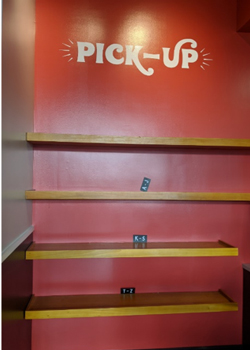The Foodservice industry continues to evolve at a rapid pace, as it has been for the last 5 to 10 years. From companies trying robotics and other forms of automation, to well-established chains trying to branch out into new areas (e.g. delivery, adding alcohol, etc.), these forms of rapid restaurant evolution sometimes drive the need to develop ground-breaking solutions to complex problems that may arise.
One of the most prevalent problems today is the need to keep labor costs down, while maintaining a certain level of customer service. This is no easy task. As take-away and delivery sales continue to grow in the United States, concepts continue to struggle in their search for simple ways to better facilitate off-premises sales growth, while reducing the work requirements of team members. Though off-premises volume does offer operators certain simplicities, such as reducing/eliminating work content in table service and transactional labor, it did amplify the need to solve for ways to improve one of the few remaining interactions: handing off the food to customers who placed their orders off-premises.
Upon arrival, off-premises customers continued to face the difficulty of having to queue in the same space as the on-premises customers. That was due to the fact the restaurant still required some interaction with the customer to complete the transaction. This caused customer frustrations and front-of-house congestion issues. To solve these challenges, some concepts invested heavily in automation in the form of kiosks or some other type of technology. Some of the restaurants with the most success in serving off-premises customers, though, started with the understanding that simplicity is key.
 As an Industrial Engineer, I think back on a concept I was taught as a student, the K.I.S.S. principle. Not to be confused with the legendary rock band, K.I.S.S. stands for “keep it simple, silly”. In a nutshell, this principle claims a system will work best if it is kept simple, rather than made complicated, or to eliminate any unnecessary complexity or be avoided altogether.
As an Industrial Engineer, I think back on a concept I was taught as a student, the K.I.S.S. principle. Not to be confused with the legendary rock band, K.I.S.S. stands for “keep it simple, silly”. In a nutshell, this principle claims a system will work best if it is kept simple, rather than made complicated, or to eliminate any unnecessary complexity or be avoided altogether.
So how did the titans of the take-away restaurant industry solve the complex issue of off and on-premises customers clashing, while also reducing the interaction with team members? Simple solutions, naturally. The simplest examples take the form of a dedicated pickup shelf, followed by signage. These restaurants took the aforementioned complex problem, and designed a simple, somewhat low-cost solution.
As the restaurant industry’s complexities continue to evolve, always remember the K.I.S.S. principle when contemplating any design changes, as some of the most intricate systems can be made simpler first, before having to completely overhaul the design.
Designing simplicities in complex systems will be challenging, but I bet if you think about it, you can find simple solutions within the complexities.




